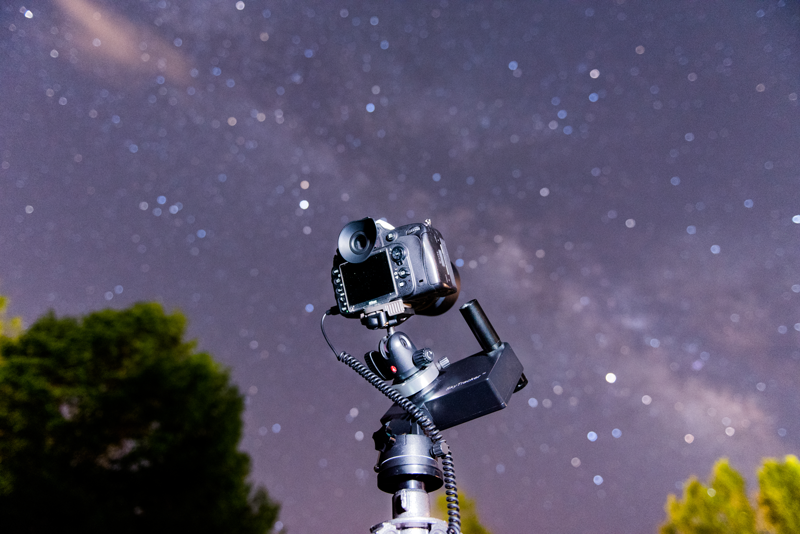Best Camera for Astrophotography: A Comprehensive Guide
Astrophotography is a fascinating hobby that allows you to capture stunning images of the night sky. However, to achieve the best results, you need a camera that is specifically designed for astrophotography. With so many cameras available on the market, it can be overwhelming to choose the right one. That's why we've compiled a list of the best cameras for astrophotography to help you make an informed decision.
Canon EOS 6D Mark II
The Canon EOS 6D Mark II is a full-frame DSLR camera that is specifically designed for astrophotography. It features a 26.2-megapixel sensor and an ISO range of 100-40,000, making it ideal for capturing clear images in low-light conditions. The camera also has a built-in intervalometer for capturing time-lapse sequences.
Sony A7R III
The Sony A7R III is a full-frame mirrorless camera that is ideal for astrophotography due to its excellent low-light performance. It features a 42.4-megapixel sensor and an ISO range of 100-32,000, making it one of the best cameras for capturing clear images in low-light conditions. The camera also has a built-in image stabilization system for reducing camera shake.
Canon EOS 5D Mark IV
The Canon EOS 5D Mark IV is a full-frame DSLR camera that is renowned for its excellent image quality and advanced features. It features a 30.4-megapixel sensor and an ISO range of 100-32,000, making it ideal for capturing clear images of the night sky. The camera also has a built-in intervalometer for capturing time-lapse sequences.
Nikon D850
The Nikon D850 is a full-frame DSLR camera that is renowned for its high-resolution sensor and excellent image quality. It features a 45.7-megapixel sensor and an ISO range of 64-25,600, making it ideal for capturing detailed and clear images of the night sky. The camera also has a built-in intervalometer for capturing time-lapse sequences.
Sony A7S II
The Sony A7S II is a full-frame mirrorless camera that is ideal for astrophotography due to its excellent low-light performance. It features a 12.2-megapixel sensor and an ISO range of 100-102,400, making it one of the best cameras for capturing clear images in low-light conditions. The camera also has a built-in image stabilization system for reducing camera shake.
Nikon D750
The Nikon D750 is a full-frame DSLR camera that is renowned for its excellent image quality and low-light performance. It features a 24.3-megapixel sensor and an ISO range of 100-12,800, making it ideal for capturing clear images of the night sky. The camera also has a built-in intervalometer for capturing time-lapse sequences.
Canon EOS 7D Mark II
The Canon EOS 7D Mark II is a crop sensor DSLR camera that is specifically designed for astrophotography. It features a 20.2-megapixel sensor and an ISO range of 100-16,000, making it ideal for capturing clear images in low-light conditions. The camera also has a built-in intervalometer for capturing time-lapse sequences.
Canon EOS Ra
The Canon EOS Ra is a full-frame mirrorless camera that is specifically designed for astrophotography. It features a 30.3-megapixel sensor and a specialized infrared-cutting filter that allows for enhanced sensitivity to hydrogen-alpha (Hα) wavelengths of light. The camera also has a high ISO range of 100-40,000, making it ideal for capturing clear images in low-light conditions.
Sony Alpha a7S II
The Sony Alpha a7S II is a full-frame mirrorless camera that is ideal for astrophotography due to its excellent low-light performance. It features a 12.2-megapixel sensor and an ISO range of 100-102,400, making it one of the best cameras for capturing clear images in low-light conditions. The camera also has a built-in image stabilization system for reducing camera shake.
Fujifilm X-T4
The Fujifilm X-T4 is a mirrorless camera that is renowned for its excellent image quality and advanced features. It features a 26.1-megapixel sensor and an ISO range of 160-12,800, making it ideal for capturing detailed and clear images of the night sky. The camera also has a built-in image stabilization system and a vari-angle LCD screen for capturing images at different angles.
In conclusion, astrophotography is a fascinating and rewarding hobby, and investing in the right camera is crucial for achieving excellent results. The cameras listed above are some of the best options available on the market for astrophotography, offering advanced features and high-quality optics. Whether you're a beginner or an experienced astrophotographer, any of these cameras will provide you with the tools you need to capture stunning images of the night sky.
More Astrophotography Topics:
- Astrophotography Equipment for Beginners
- Astrophotography for Beginners
- Best Telescope for Astrophotography
- Best Telescope for Deep Space Astrophotography
- What Equipment Do I Need for Astrophotography
- Astrophotography Camera Settings
- Astrophotography Image Processing
- Night Sky Astrophotography Tips
- Milky Way Astrophotography Tips
- Beginner Deep Sky Astrophotography Targets
- Astrophotography Setup for Beginners
- Astrophotography Tips for Beginners
- Astrophotography for Dummies
- Astrophotography Image Editing Software
- Astrophotography Focusing Techniques
- Best Astrophotography Star Tracking Mount
- Best Beginner Astrophotography Targets
- Best Image Stacking Software for Astrophotography
- Best Narrowband Astrophotography Targets
- Astrophotography Targets by Month
- Good Widefield Astrophotography Targets
- GIMP Astrophotography Plugins
- Flat Frames Astrophotography
- Bias Frames Astrophotography
- Dark Frames Astrophotography
- Calibration Frames Astrophotography
- Dithering Astrophotography
- What is Astrophotography
- Starnet Astrophotography
- Star Tracker Astrophotography
- Best Astrophotography Books
- Astrophotography Setups Under $2000
- Best Phone Tripod for Astrophotography
- Best ISO for Long Exposure Astrophotography
- Removing Brown Tones Astrophotography Images
- Best Focal Length for Deep Space Astrophotography
- Best Guide Scope for Astrophotography
- Do I Need a Guide Scope for Astrophotography
- Astrophotography Targets by Focal Length
- Astrophotography Binning
- Astrophotography Exposure Time
- Bortle Scale
- Tripod Position

